A 10-year mono-center study on patients with burns ≥70% TBSA: prediction model construction and multicenter validation - retrospective cohort
- PMID: 38963751
- PMCID: PMC11745587
- DOI: 10.1097/JS9.0000000000001880
A 10-year mono-center study on patients with burns ≥70% TBSA: prediction model construction and multicenter validation - retrospective cohort
Abstract
Background: Burn injuries with ≥70% total body surface area (TBSA) are especially acute and life-threatening, leading to severe complications and terrible prognosis, while a powerful model for the prediction of overall survival (OS) is lacking. The objective of this study is to identify prognostic factors for the OS of patients with burn injury ≥70% TBSA and construct and validate a feasible predictive model.
Materials and methods: Patients diagnosed with burns ≥70% TBSA admitted and treated between 2010 and 2020 in our hospital were included. A cohort of the patients from the Kunshan explosion were assigned as the validation set. The χ2 test and K-M survival analysis were conducted to identify potential predictors for OS. Then, multivariate Cox regression analysis was performed to identify the independent factors. Afterward, we constructed a nomogram to predict OS probability. Finally, the Kunshan cohort was applied as an external validation set.
Results: Sex, the percentage of third-degree and fourth-degree burns as well as organ dysfunction were identified as significant independent factors. A nomogram only based on the factors of the individuals was built and evidenced to have promising predictive accuracy, accordance, and discrimination by both internal and external validation.
Conclusions: This study recognized significant influencing factors for the OS of patients with burns ≥70% TBSA. Furthermore, our nomogram proved to be an effective tool for doctors to quickly evaluate patients' outcomes and make appropriate clinical decisions at an early stage of treatment.
Copyright © 2024 The Author(s). Published by Wolters Kluwer Health, Inc.
Conflict of interest statement
The authors declare no conflict of interest.
Sponsorships or competing interests that may be relevant to content are disclosed at the end of this article.
Figures
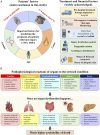
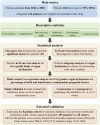

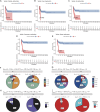
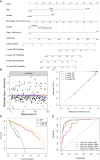

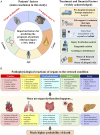
Similar articles
-
Models predicting mortality risk of patients with burns to ≥ 50% of the total body surface.Burns. 2024 Jun;50(5):1277-1285. doi: 10.1016/j.burns.2024.02.031. Epub 2024 Mar 4. Burns. 2024. PMID: 38490836
-
Nomogram based on burn characteristics and the National Early Warning Score to predict survival in severely burned patients.Burns. 2025 Feb;51(1):107285. doi: 10.1016/j.burns.2024.10.006. Epub 2024 Oct 28. Burns. 2025. PMID: 39644812
-
Long term mortality in critically ill burn survivors.Burns. 2017 Sep;43(6):1155-1162. doi: 10.1016/j.burns.2017.05.010. Epub 2017 Jun 9. Burns. 2017. PMID: 28606748
-
Clinical characteristics and risk factors for severe burns complicated by early acute kidney injury.Burns. 2020 Aug;46(5):1100-1106. doi: 10.1016/j.burns.2019.11.018. Epub 2019 Dec 13. Burns. 2020. PMID: 31839503
-
[Establishment and validation of a risk prediction model for disseminated intravascular coagulation patients with electrical burns].Zhonghua Shao Shang Yu Chuang Mian Xiu Fu Za Zhi. 2023 Aug 20;39(8):738-745. doi: 10.3760/cma.j.cn501225-20230419-00132. Zhonghua Shao Shang Yu Chuang Mian Xiu Fu Za Zhi. 2023. PMID: 37805784 Free PMC article. Chinese.
References
Publication types
MeSH terms
LinkOut - more resources
Full Text Sources
Medical

